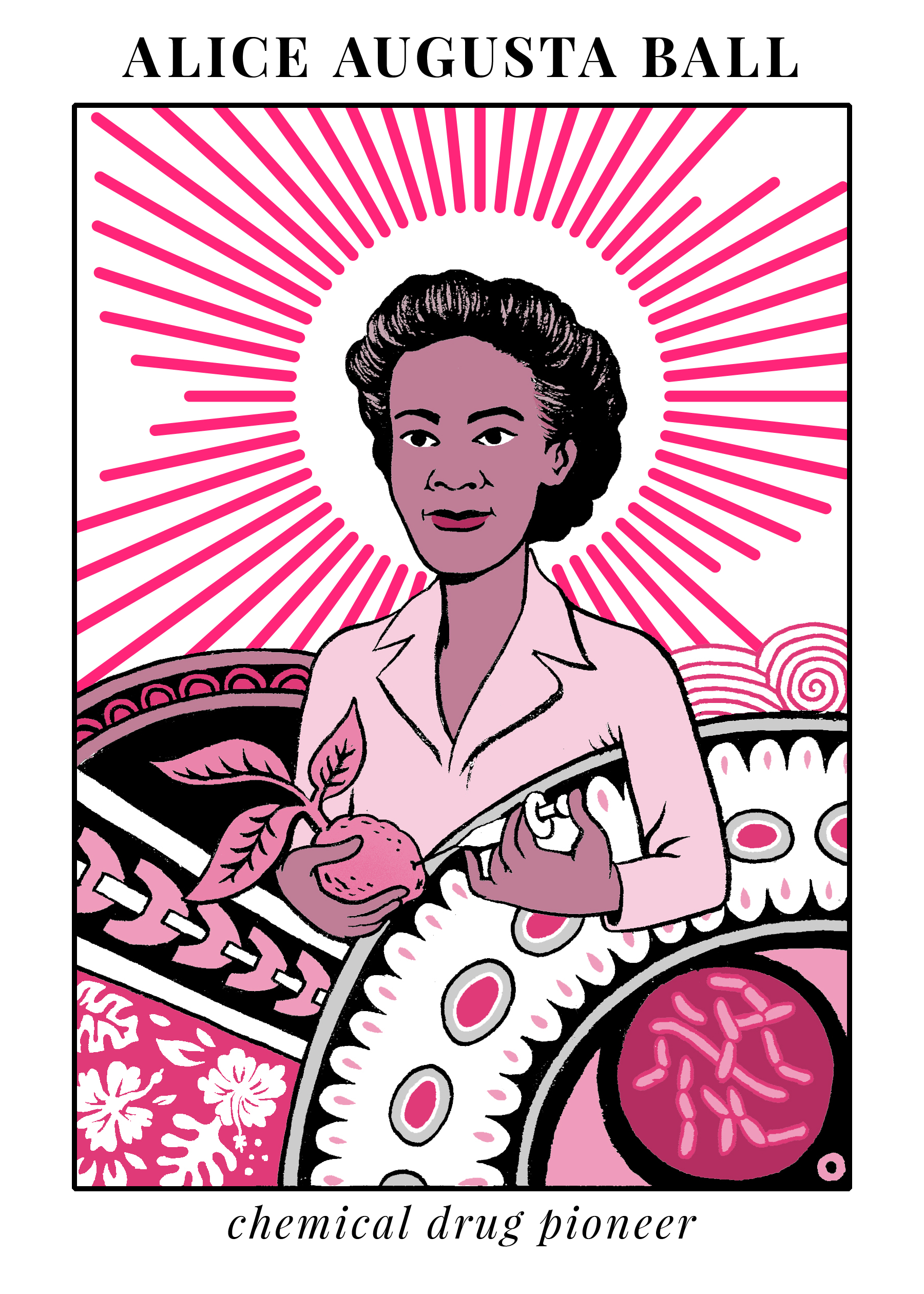Meet the chemist who engineered the first effective treatment of leprosy
Alice Augusta Ball died at the age of 24. Ninety years later, we finally started recognizing her contributions.
Matteo Farinella
Leprosy, also called Hansen’s disease after the Norweigan doctor who discovered the bacteria that causes it, has a long and dark history. Records of the disease date as far back as 2000 BC, where it is described in Indian Vedic scriptures, dates that have since been supported by archaeological evidence.
For centuries, civilizations around the globe believed that Hansen’s disease was highly contagious. To prevent its spread, those suffering from the lesions, skin discoloration and nerve damage that are symptomatic of Hansen’s disease were historically relegated to living in colonies in isolated locations. We now know casual contact does not spread the disease, although its exact mode of transmission remains unknown.
One of the earliest treatments of leprosy was ingestion or topical skin treatments made with the oil of the Chaulmoogra tree, native to India and parts of South East Asia. For centuries the oil had been used by traditional healers in Asia to treat leprosy, but the exact mechanism of action was not known, and the treatment was never wholly effective. Part of the problem was that the oil was thick and viscous, making injections of it an extremely painful process.

Illustration by Matteo Farinella
That changed when Dr. Harry T. Hollman, a surgeon who worked at a leprosy colony in Hawaii, enlisted a young graduate student to help him isolate the compounds in Chaulmoogra oil that seemed to help some patients who had leprosy.
Her name was Alice Augusta Ball. Born in Seattle in 1892, she was a chemist with dual bachelor’s degrees from the University of Washington in pharmaceutical chemistry and pharmacy. She moved to Hawaii to do graduate work and became the first African American and first woman to graduate from the University of Hawaii with a master’s degree.
In 1916, just a year into her studies, Ball successfully isolated the fatty acid compounds from the oil (now known to be the antimicrobial hydnocarpic acid) and made the first preparation of a water-soluble, injectable form of chaulmoogra oil. The treatment was used globally for 30 years before the development of different, more effective drugs, but Alice sadly never saw the fruits of her work. She died from an unknown illness only a few years after her discovery at the age of 24.
Making matters worse, Ball wasn't recognized for her discovery until years after her death. After she died, chemist Arthur Dean, the President of the University of Hawaii, continued her studies and claimed her discovery for himself, calling it the "Dean Method." Dr. Hollman tried to set the record straight by publicly commenting on Ball's contribution in 1922, but it wasn't until 2000, nearly 90 years after her work, that the University of Hawaii officially recognized Ball for her pioneering leprosy treatment.
Reactions, a show from the American Chemical Society and PBS Digital Studios, explains the life of Alice Ball.